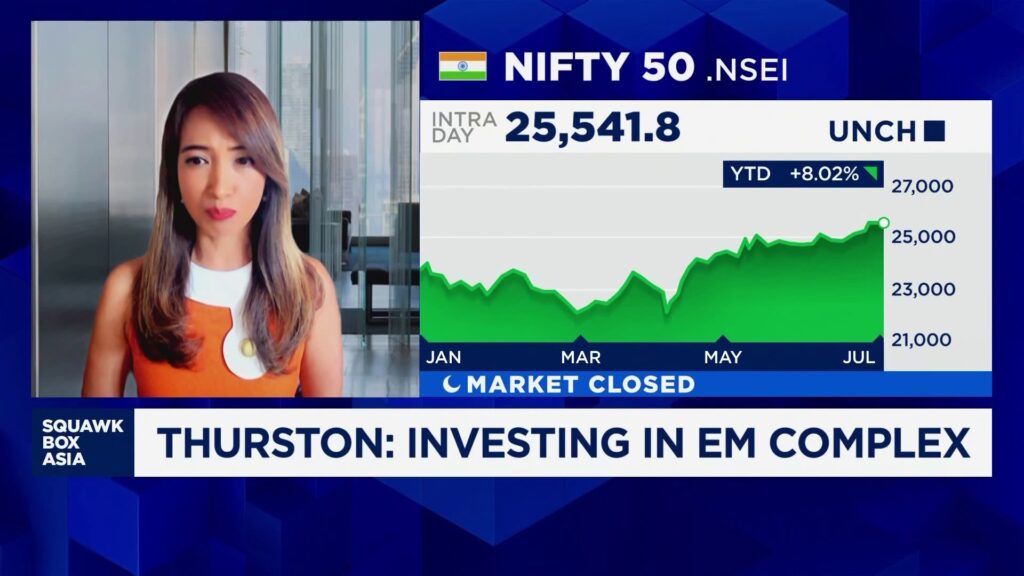Vivian Lin Thurston, a seasoned expert from William Blair Emerging Markets Growth, has highlighted significant investment opportunities within the consumption sector of emerging markets. As India, Saudi Arabia, and China experience shifts in middle-class consumption patterns, investors are keenly observing these trends for potential growth.
Thurston’s insights come at a time when the global economy is witnessing a transformation driven by the burgeoning middle class in these regions. The consumption theme in emerging markets is gaining traction as disposable incomes rise, lifestyles evolve, and consumer preferences shift.
India’s Consumption Boom
India, with its rapidly expanding middle class, is at the forefront of this consumption revolution. The country’s economic landscape is changing, driven by urbanization and increased access to digital technologies. This transformation is opening up new avenues for businesses and investors alike.
The Indian middle class is expected to grow significantly over the next decade, with estimates suggesting that it could encompass nearly 580 million people by 2030. This demographic shift is leading to increased spending on consumer goods, technology, and services.
“India’s middle class is not just growing in size but also in purchasing power, which is a crucial driver for consumption-led growth,” Thurston explained.
Saudi Arabia’s Economic Diversification
Meanwhile, in Saudi Arabia, the government’s Vision 2030 initiative is reshaping the economic landscape. The focus on diversifying the economy away from oil dependency is creating new opportunities in the consumer sector. As part of this vision, the Saudi government is investing heavily in infrastructure, tourism, and entertainment, aiming to boost domestic consumption.
The rise of e-commerce and digital payment systems in Saudi Arabia is further facilitating consumer spending. With a young, tech-savvy population, the kingdom is poised for a significant shift in consumption patterns.
According to recent data, Saudi Arabia’s e-commerce market is projected to grow by 20% annually, reaching $13.9 billion by 2023.
China’s Consumption Evolution
China, the world’s second-largest economy, continues to be a powerhouse in the global consumption market. The Chinese middle class is not only expanding but also becoming more sophisticated in its consumption habits. There is a growing demand for premium products and services, driven by an increased focus on quality and brand value.
China’s economic policies, aimed at boosting domestic consumption, have been instrumental in this transformation. The government’s dual circulation strategy emphasizes the importance of domestic markets alongside international trade.
“China’s middle class is becoming more discerning, with a strong preference for quality over quantity. This presents unique opportunities for brands that can meet these expectations,” Thurston noted.
Implications for Global Investors
The rise of the middle class in India, Saudi Arabia, and China presents both opportunities and challenges for global investors. As these markets evolve, understanding local consumer behavior and preferences becomes crucial for success. Companies that can adapt to these changing dynamics are likely to benefit from the consumption boom.
Investors are advised to focus on sectors such as technology, healthcare, and consumer goods, which are poised for growth in these emerging markets. Additionally, sustainable and ethical investment practices are becoming increasingly important to consumers in these regions.
The move represents a shift in global economic power, with emerging markets playing a more significant role in driving consumption-led growth. As these trends continue to unfold, investors and businesses must remain agile and responsive to capitalize on the opportunities presented by the rising middle class in India, Saudi Arabia, and China.
In conclusion, the evolving consumption patterns in these countries are reshaping the global economic landscape. As the middle class continues to grow, the demand for diverse products and services will increase, offering a wealth of opportunities for those ready to invest in the future.
About The Author
 U.S. Banks Boost Dividends Following Federal Reserve Stress Test Success
U.S. Banks Boost Dividends Following Federal Reserve Stress Test Success Red Panda’s Unicycle Mishap Stuns WNBA Fans During Halftime Show
Red Panda’s Unicycle Mishap Stuns WNBA Fans During Halftime Show Idaho Murder Case: Bryan Kohberger’s Controversial Plea Deal Faces Judicial Scrutiny
Idaho Murder Case: Bryan Kohberger’s Controversial Plea Deal Faces Judicial Scrutiny Pentagon Halts Some Munitions Shipments to Ukraine Amid Strategic Review
Pentagon Halts Some Munitions Shipments to Ukraine Amid Strategic Review Over-the-Counter Glucose Monitors: Who Truly Benefits?
Over-the-Counter Glucose Monitors: Who Truly Benefits?